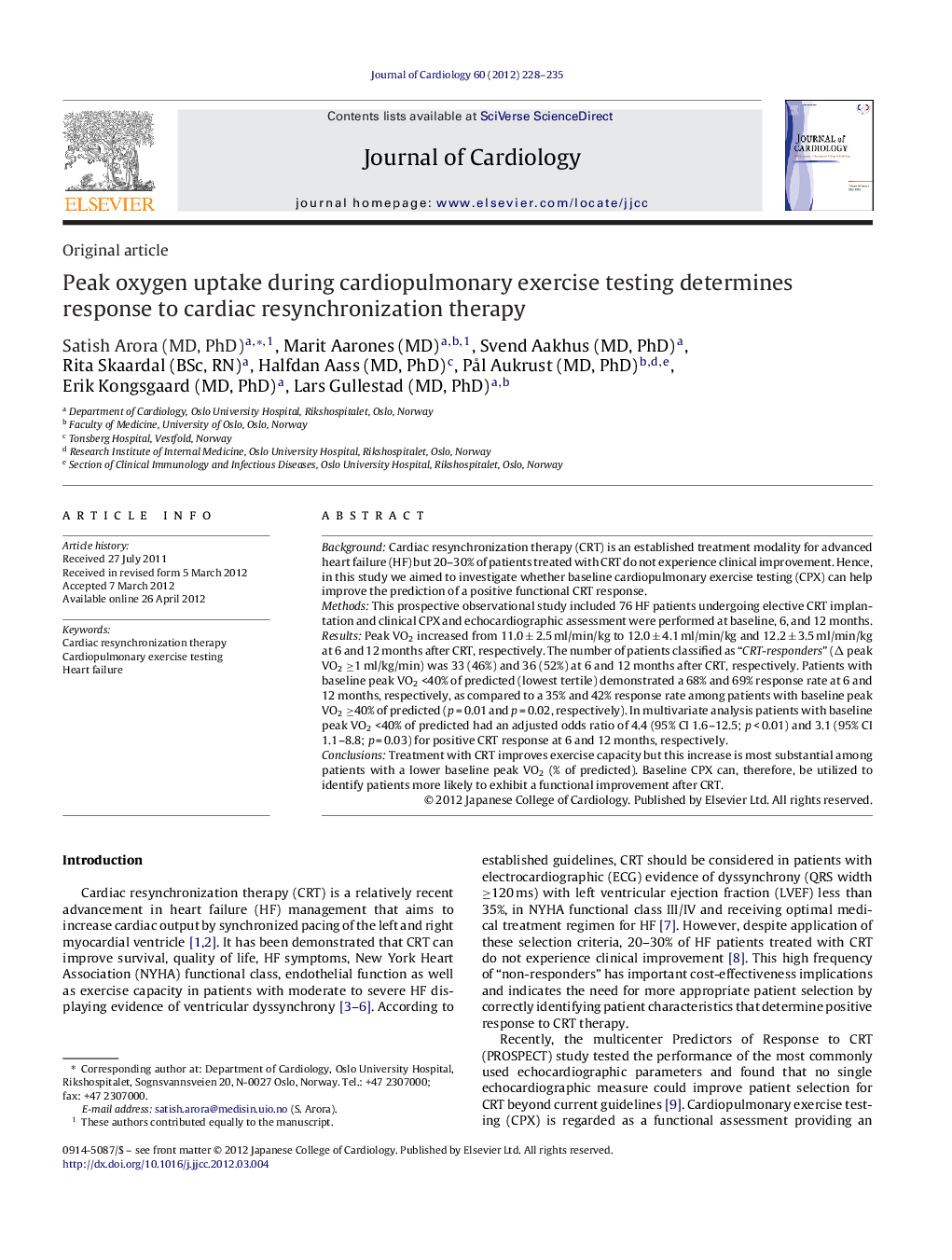| Article ID | Journal | Published Year | Pages | File Type |
|---|---|---|---|---|
| 2963135 | Journal of Cardiology | 2012 | 8 Pages |
SummaryBackgroundCardiac resynchronization therapy (CRT) is an established treatment modality for advanced heart failure (HF) but 20–30% of patients treated with CRT do not experience clinical improvement. Hence, in this study we aimed to investigate whether baseline cardiopulmonary exercise testing (CPX) can help improve the prediction of a positive functional CRT response.MethodsThis prospective observational study included 76 HF patients undergoing elective CRT implantation and clinical CPX and echocardiographic assessment were performed at baseline, 6, and 12 months.ResultsPeak VO2 increased from 11.0 ± 2.5 ml/min/kg to 12.0 ± 4.1 ml/min/kg and 12.2 ± 3.5 ml/min/kg at 6 and 12 months after CRT, respectively. The number of patients classified as “CRT-responders” (Δ peak VO2 ≥1 ml/kg/min) was 33 (46%) and 36 (52%) at 6 and 12 months after CRT, respectively. Patients with baseline peak VO2 <40% of predicted (lowest tertile) demonstrated a 68% and 69% response rate at 6 and 12 months, respectively, as compared to a 35% and 42% response rate among patients with baseline peak VO2 ≥40% of predicted (p = 0.01 and p = 0.02, respectively). In multivariate analysis patients with baseline peak VO2 <40% of predicted had an adjusted odds ratio of 4.4 (95% CI 1.6–12.5; p < 0.01) and 3.1 (95% CI 1.1–8.8; p = 0.03) for positive CRT response at 6 and 12 months, respectively.ConclusionsTreatment with CRT improves exercise capacity but this increase is most substantial among patients with a lower baseline peak VO2 (% of predicted). Baseline CPX can, therefore, be utilized to identify patients more likely to exhibit a functional improvement after CRT.
